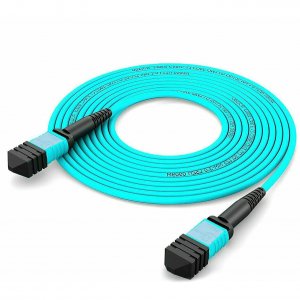Data centers are the backbone of the modern digital world, storing and processing vast amounts of data for businesses, governments, and individuals. As the amount of data continues to grow, so does the need for faster and more efficient ways of transferring it. That’s why data centers are increasingly using MPO (Multi-fiber Push On) or MTP (Mechanical Transfer Push On) communication interfaces.
MPO and MTP interfaces offer several advantages over traditional single-fiber and duplex connectors. First and foremost, they allow for a much higher density of connections in a smaller space, making them ideal for data centers where space is often limited. MPO and MTP interfaces can support up to 12 fibers in a single connector, compared to just two in a traditional duplex connector. This increased density reduces the amount of space required for cabling and connectivity, freeing up valuable real estate for other uses.
Another advantage of MPO and MTP interfaces is their high speed and bandwidth capabilities. These interfaces support data transfer rates of up to 100 Gbps, making them ideal for the high-speed networks required by data centers. Additionally, the use of MPO or MTP connectors simplifies the cabling process, reducing the time and costs associated with installation and maintenance.
MPO and MTP connectors are also designed for maximum reliability and durability, making them ideal for use in data centers. They use a push-on mechanism to secure the fibers in place, reducing the risk of fiber damage and ensuring stable connections. The use of high-quality materials, such as ceramic ferrules and metal guide pins, also helps to ensure long-lasting and trouble-free performance.
Finally, MPO and MTP connectors are fully compatible with a wide range of optical transceivers, making them easy to integrate into existing data center networks. This compatibility enables data centers to quickly and easily upgrade their networks to support faster speeds and greater bandwidths, without having to replace all of their existing cabling and connectivity.
In conclusion, the increasing use of MPO and MTP communication interfaces in data centers is driven by the need for faster, more efficient, and more reliable data transfer. These interfaces offer many advantages over traditional connectors, including higher density, faster speeds, greater reliability, and easier integration into existing networks. As the amount of data continues to grow, it is likely that we will see even more widespread use of MPO and MTP interfaces in data centers in the years to come.


